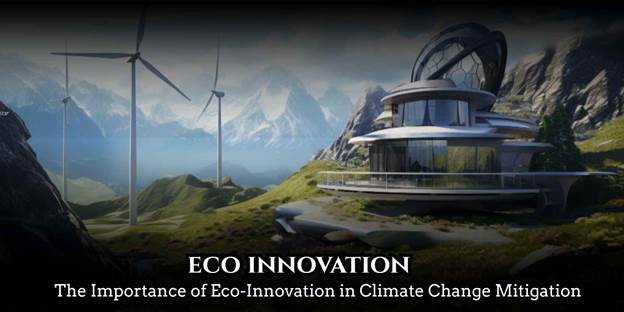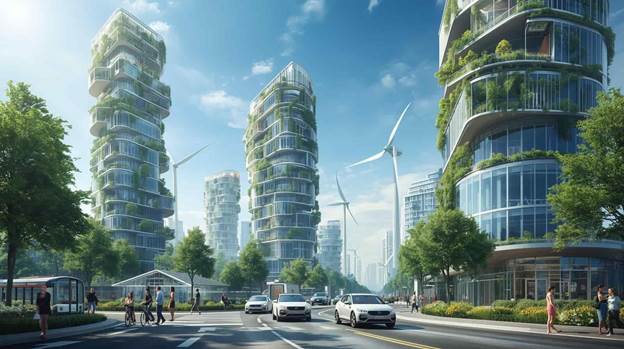Understanding Eco-Innovation: A Green Path to Sustainability
Eco-innovation refers to the development of new products, services, or processes that reduce environmental impacts while enhancing economic and social value. It combines creativity with sustainability, ensuring progress does not come at the cost of nature. As global warming intensifies, eco-innovation has become a crucial strategy for addressing climate change challenges and achieving long-term ecological balance.
Table of Contents
At its core, eco-innovation integrates environmental thinking into business models, urban development, and industrial production. It promotes cleaner technologies, renewable energy solutions, waste reduction methods, and circular economy practices all designed to reduce carbon footprints and resource consumption.

The Evolution and Background of Eco-Innovation
The concept of eco-innovation emerged in the late 20th century, inspired by the need to shift from linear to sustainable economic growth. Initially rooted in environmental economics, it has now expanded into all sectors energy, agriculture, transport, and manufacturing. The rise of the green economy and the Paris Agreement’s emission targets have further accelerated its adoption globally.
Historically, innovation was driven by efficiency and profit. However, modern eco-innovation blends these goals with environmental responsibility. It acknowledges that technological progress and sustainability are not opposites but complementary forces that can coexist harmoniously.
Why Eco-Innovation Matters in Climate Change Mitigation
Eco-innovation is vital for reducing greenhouse gas emissions, conserving natural resources, and supporting biodiversity. It empowers industries to replace pollutive technologies with sustainable alternatives. The connection between eco-innovation and climate change mitigation lies in its capacity to transform entire systems production, consumption, and waste management.
Key contributions of eco-innovation to climate mitigation include:
• Promoting renewable energy technologies like solar, wind, and geothermal power.
• Reducing emissions through energy-efficient infrastructure and vehicles.
• Encouraging sustainable materials and biodegradable products.
• Advancing waste-to-energy and carbon capture technologies.
Through these methods, eco-innovation not only reduces pollution but also strengthens economic resilience in the face of environmental crises.
The Role of Businesses and Governments in Eco-Innovation
For eco-innovation to thrive, both the public and private sectors must collaborate. Businesses are at the forefront of green technology development, while governments provide the necessary regulatory frameworks and financial incentives.
Government initiatives often include green tax reforms, carbon pricing, and funding for research in clean energy and waste management. Corporate eco-innovation, on the other hand, focuses on designing sustainable supply chains, improving production efficiency, and developing low-emission products.
Countries like Sweden, Japan, and Germany have successfully integrated eco-innovation policies into their national climate agendas. Their models demonstrate how strong partnerships between innovation and environmental governance can drive global progress.
Benefits of Eco-Innovation for Society and the Planet
Eco-innovation offers multidimensional benefits that extend beyond environmental preservation. Its holistic approach impacts economic stability, job creation, and social well-being.
Some major benefits include:
- Economic Growth: Green technologies create new markets and employment opportunities in sectors like renewable energy and eco-design.
Resource Efficiency: It minimizes the use of raw materials and promotes recycling and upcycling. - Health and Quality of Life: Reduced pollution leads to cleaner air, safer food, and healthier ecosystems.
- Resilient Infrastructure: Eco-innovation promotes climate-smart designs that can withstand extreme weather events.
By embedding sustainability into innovation, societies can foster inclusive development that benefits both present and future generations.
Challenges Facing Eco-Innovation Implementation
Despite its promise, eco-innovation faces various challenges that slow its global adoption. These include high initial costs, lack of awareness, limited funding, and resistance to change in traditional industries. Many small and medium enterprises struggle to access the technology and expertise required to innovate sustainably.
Additionally, policy inconsistencies and inadequate environmental regulations hinder long-term investments in green technologies. Overcoming these obstacles requires stronger collaboration between stakeholders scientists, policymakers, and entrepreneurs to create supportive ecosystems for innovation.
Real-World Examples of Eco-Innovation Success
Several inspiring eco-innovation projects around the world highlight its transformative power:
• Tesla’s Electric Revolution: By redefining transportation with electric vehicles, Tesla has significantly reduced CO2 emissions in the automotive industry.
• IKEA’s Circular Design Model: IKEA promotes sustainable furniture through recycled materials and energy-efficient production.
• The Netherlands’ Floating Farms: These farms reduce land use and emissions while ensuring food security amid rising sea levels.
• Japan’s Smart Cities: Through integrated technologies, Japan’s smart cities optimize energy use, waste management, and mobility.
These examples demonstrate that eco-innovation is not just an environmental necessity it’s an opportunity for creative reinvention and global collaboration.

The Future of Eco-Innovation in Climate Action
As climate change accelerates, eco-innovation will shape the future of sustainability. Emerging technologies like artificial intelligence, blockchain, and biotechnology are expected to enhance environmental monitoring and resource optimization. The shift toward net-zero emissions will depend heavily on how effectively societies adopt these innovations.
For eco-innovation to succeed globally, it must be inclusive, accessible, and adaptable. Governments, industries, and citizens need to work collectively to turn innovative ideas into scalable, eco-friendly solutions.
Conclusion
Eco-innovation stands as a cornerstone of modern climate change mitigation. It bridges the gap between technological progress and environmental protection, driving a shift toward sustainable development. By fostering cleaner industries, renewable energy adoption, and green entrepreneurship, eco-innovation ensures a livable planet for future generations. Embracing it today means investing in a greener, more resilient tomorrow one powered by innovation, collaboration, and environmental consciousness.